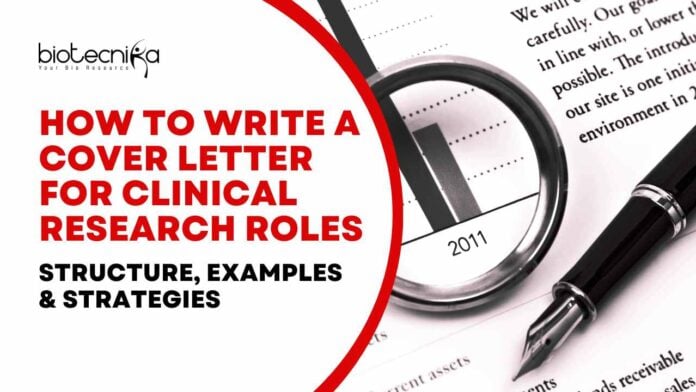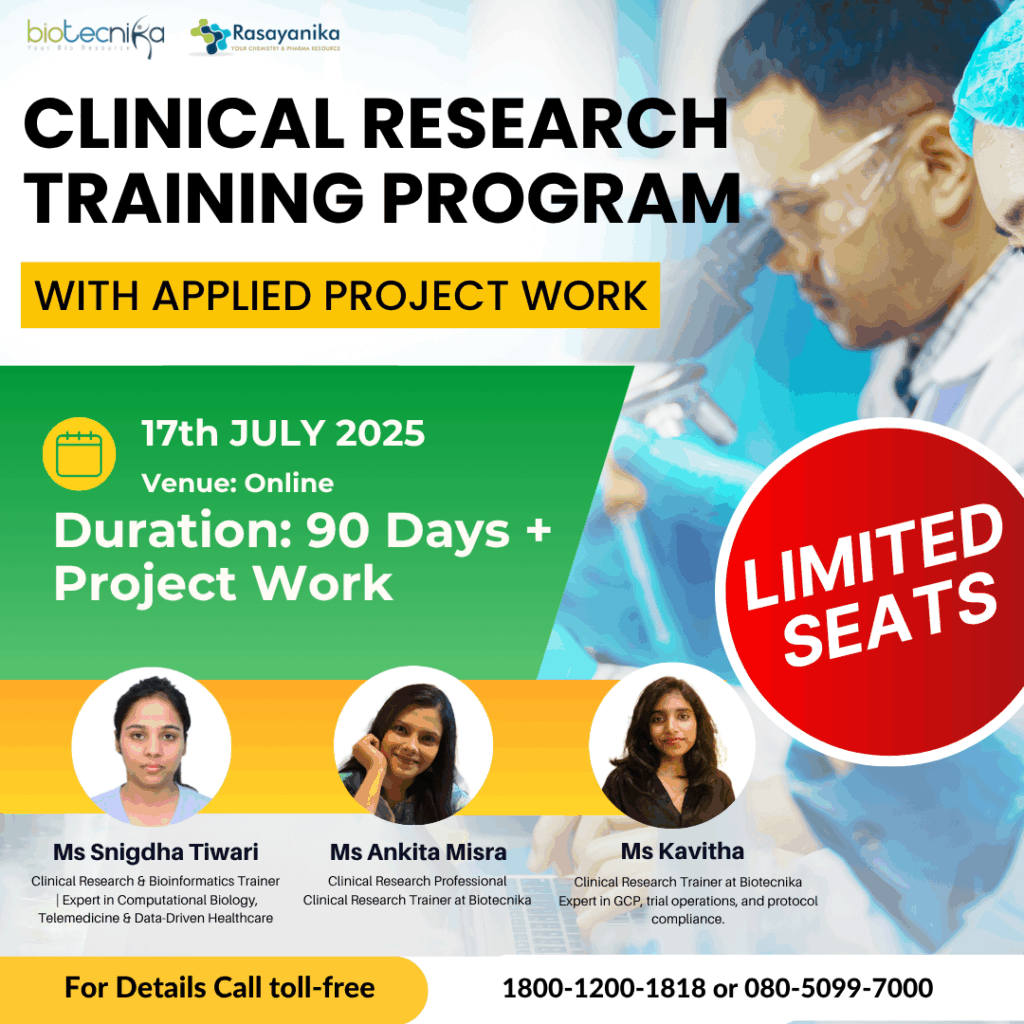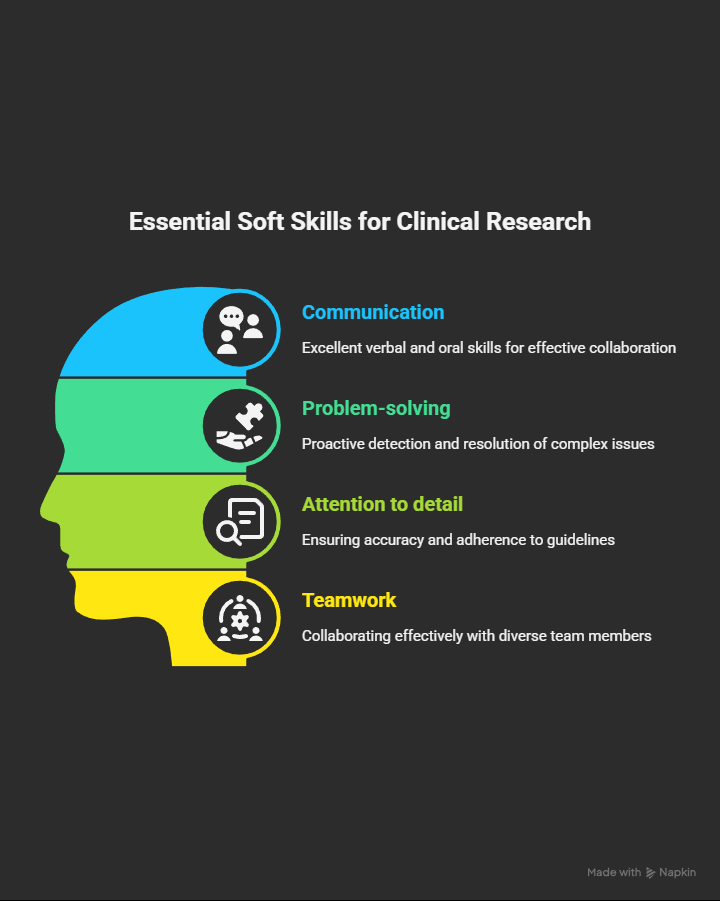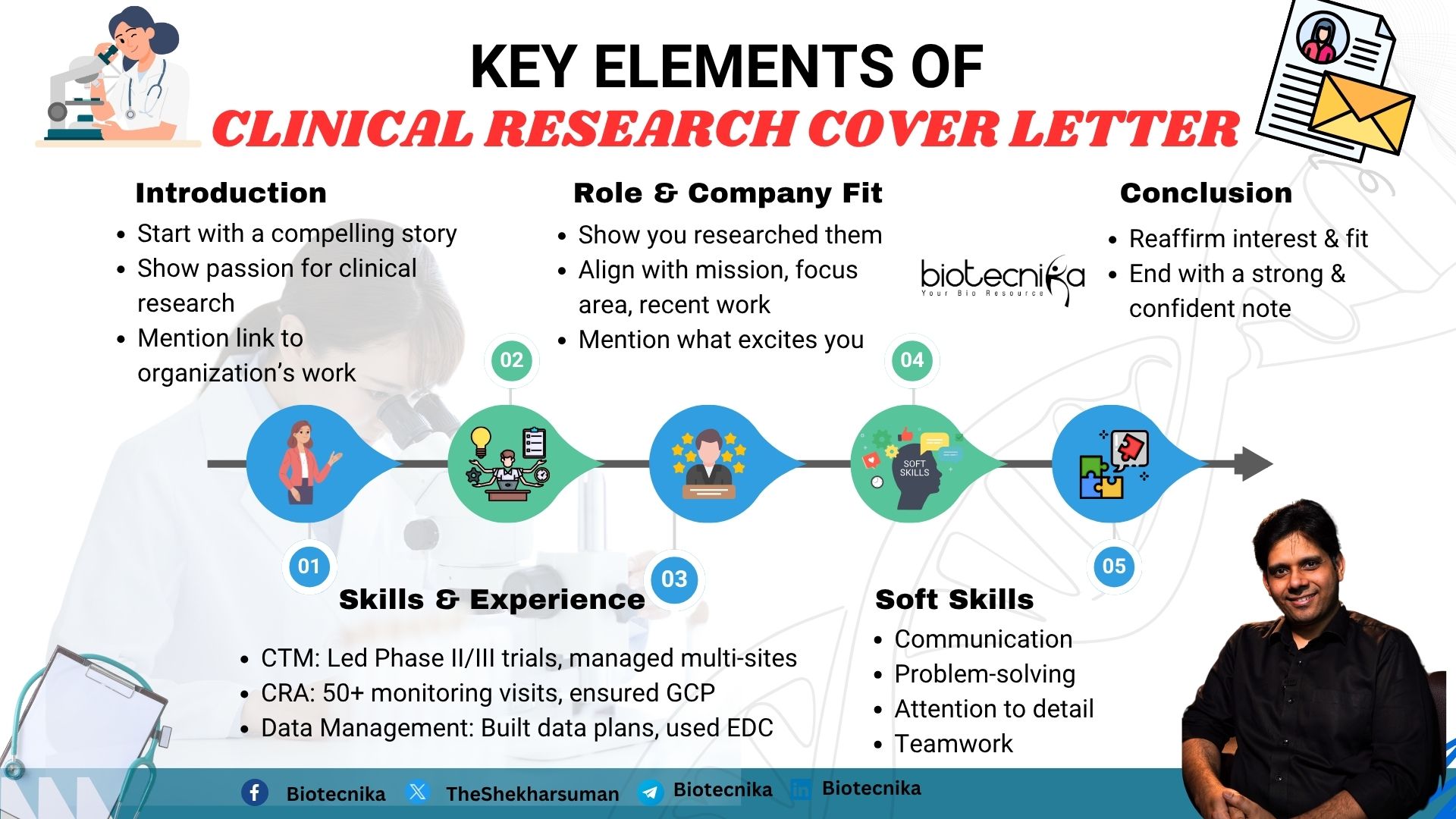Table of Contents
Crafting a Winning Cover Letter for Clinical Research Roles
“First Impression Is The Last Impression”
This old saying is especially true in the clinical research industry, where detail, precision, and integrity are not just valued, they are required. In this competitive field, crafting a compelling cover letter for clinical research positions is essential. Your resume may list your qualifications, but it is your cover letter that breathes life into your professional narrative. A well-crafted cover letter doesn’t merely repeat your resume—it contextualizes it, persuades the reader, and highlights why you, specifically, are a match for the role.
But how does one craft a compelling cover letter that genuinely stands out in a high-volume, high-expectation industry like clinical research?
This article delves into the strategy, structure, and subtle nuances of writing a standout cover letter for clinical research roles, including insights specific to India’s rapidly growing life sciences sector.
What Clinical Research Demands
Clinical research is a meticulously regulated field involving trials, data integrity, regulatory compliance, and ethical conduct. Your cover letter must reflect a clear understanding of these elements, especially if you are applying for roles such as:
- Clinical Research Associate (CRA)
- Clinical Trial Coordinator
- Regulatory Affairs Specialist
- Data Manager
- Pharmacovigilance Associate
Core competencies that hiring managers look for include:
- Knowledge of ICH-GCP and, in India, Schedule Y and CDSCO guidelines
- Experience with EDC systems (such as Medidata Rave, Oracle Clinical)
- Familiarity with site monitoring and source data verification
- Documentation and compliance skills
- Effective communication with site staff, investigators, and sponsors
Dr. Meena Joshi, Clinical Operations Lead at Tata Memorial Centre in Mumbai, emphasizes this:
“A good cover letter indicates whether the candidate truly understands the role of quality, ethics, and precision in clinical trials. It’s the first document where we assess their clarity of thought and motivation.”
New Batch – Clinical Research Training | Starts 17 July 2025
Choose 1 / 3 / 6‑month projects | 100 % placement support
Essential elements of a cover letter
A compelling cover letter is more than 3-4 paragraphs of formalities; it is a professional narrative of your career. It speaks directly to the desires of the hiring manager. Here is the breakdown of the key components:
1. Introduction: Start with your purpose
Forget the bland, generic statements. Instead, aim to begin with an opening that immediately captures attention and showcases your enthusiasm.
Follow the organization’s work and mention anything that has inspired you or made you relate to it right away to create an instant rapport.
Instead of: I am writing to apply for the position of CRA
You could write: “While supporting a site monitoring for a phase II oncology trial, I observed first-hand how important it is to adhere to protocols, as it impacts patient outcomes, a realization that inspired me to choose a career in clinical operations.”
2. Showcasing Your Relevant Skills and Experience:
Dedicate 1-2 paragraphs to showcasing achievements and experiences that map directly to the job description and requirements. Don’t reiterate what is already in your resume; instead provide specific examples and demonstrate your capabilities.
-
- For Clinical Trial Management Roles: Instead of saying “Managed clinical trials”, you could replace it with Successfully managed all phases of Phase II multi-center clinical trial for (therapeutic area), overseeing a team of (number) research coordinators and ensuring compliance of guidelines.
- For Clinical Research Associate (CRA) Roles: use sentences like – “Conducted over 60 on-site monitoring and overviews across various clinical trial sites, proactively troubleshooting issues, ensuring compliance, and mediating strong relationships with site personnel.
- For Data Management Roles: Try to elaborate and be specific, mention project details, e.g., designed and implemented robust data management plans, utilizing EDC systems, etc.
Remember to quantify your achievements whenever possible. Specific examples add significant weight to your claims.
3. Demonstrating Your Understanding of the Role & Responsibilities:
This section is designed to test your knowledge about the role and the organization, and whether you have done your homework. Research about the company’s mission and vision, recent projects, achievements, or any other relevant news.
Form your letter in such a way that reflects this understanding, and explain why you are drawn towards the company. What aspects of the job description excite you?
You could structure your paragraph this way: I am particularly interested in(Organization name)’s commitment to (specific mission) and their innovative approach to (Specific Research Area), as vouched by recent work on (Specific Research Project). My passion for (Relevant Research Area) aligns perfectly with your organization’s vision, and I am confident that my skills and experience would be an asset to your organization.
4. Highlighting Your Soft Skills and Personal Qualities:
The clinical research field is a collaborative field that requires strong communication with different teams. Don’t neglect soft skills and be sure to mention them.
- Communication: Excellent verbal and oral communication skills, enabling effective communication and collaboration with other departments.
-
- Problem-solving: Proactively detect and troubleshoot problems or complex issues that might hinder the course of a clinical trial.
- Attention to detail: Detail-oriented and ensures accuracy and adherence to standard guidelines in all aspects of the clinical trials.
- Teamwork: Should be capable of collaborating and working with members of the team belonging to different disciplines and contributing positively to excel together.
Consider situations where you demonstrated these qualities and briefly weave them into your narrative.
5. The Powerful Conclusion:
Most of the individuals neglect the conclusion, but every part of the cover letter is significant in its own way. Your closing paragraph should highlight your interest in the opportunity and your confidence to contribute meaningfully to the organization.
Use this section to express your eagerness to learn more about your role and discuss your qualifications further. End on a strong and positive note.
For example: “I am confident that my skills and experience, as mentioned, align well with the requirements of this position, and that you can make a significant contribution to the team and organization. I eagerly look forward to the provided opportunity to discuss my application further.
Common mistakes to avoid in crafting Cover Letter for Clinical Research:
Most of the time, cover letters fail because they do not contain authenticity, specificity, and strategy.
Avoid:
- Do not use vague terms like “hardworking” or “teamwork” without examples.
- Don’t repeat your resume or earlier content/information.
- Don’t choose generic templates with no reference to a specific role or company.
Do’s:
- Personalize your letter for every role
- Use metrics and outcomes to describe your contributions.
- Demonstrate knowledge of the organization’s focus areas or pipeline.
Asking yourself these questions can help refine your letter:
- Which project/ moment led you to choose clinical research as your career?
- Why am I interested in working in this organization, and how can I contribute to its goals?
- How have I made an impact in previous roles?
Insights and Resources
To understand the application process, consider exploring the following.
- Good Clinical Practice (GCP) Guidelines: An important necessity in clinical research. Familiarity with these guidelines is basic.
- Clinical Trial Protocols: Understanding the clinical trial protocols is crucial to functioning in various roles.
- Electronic Data Capture (EDC) Systems: Experience with certain EDC systems like Medidata, Rave, Oracle Clinical One gives an edge over other candidates.
- Statistical Analysis Software: Software like SAS or R is often appreciated for data analysis roles.
- Professional Organizations: Association of Clinical Research Professionals (ACRP) or the Society for Clinical Research Sites (SCRS) can provide you with valuable connections and resources.
“The pen is mightier than the sword,” goes the proverb. In the world of clinical research hiring, the right words in the right format can indeed shape your future.
Your cover letter is more than a summary—it is a bridge between your skills and the role you aspire to fill. In an industry built on data, documentation, and discipline, the cover letter is the first true test of your ability to communicate effectively.


































